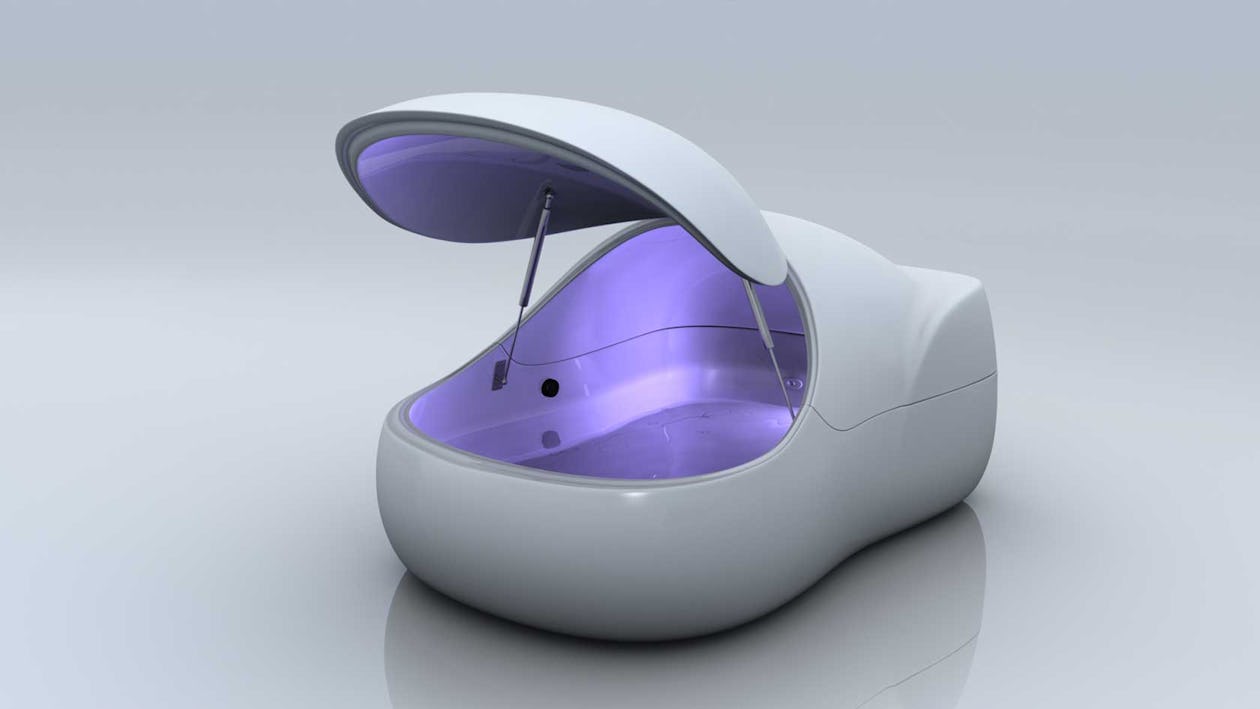“You may control a mad elephant;
You may shut the mouth of the bear and the tiger;
Ride the lion and play with the cobra;
By alchemy you may learn your livelihood;
You may wander through the universe incognito;
Make vassals of the gods; be ever youthful;
You may walk in water and live in fire;
But control of the mind is better and more difficult.”
Paramahansa Yogananda, “Autobiography of a Yogi”
Our mind has the ability to turn any heaven into a hell and any hell into a heaven. I’ve seen miserable men walk manicured gardens in the Hamptons and joyous souls plod barefoot in the poorest slums of Kenya.
All of us have experienced times when the external world yawned with perfection, but inner turmoil kept us locked in a prison of our own creation. The great mystics place mastery of the mind as the utmost priority on a path to happiness or enlightenment. It is also one of the hardest things to do.
Think of the mind as a wild stallion. You can’t just ask timidly, “Hey, Mr. Stallion, would you please do exactly what I want?”
To be the master, you must assert yourself as something greater than the mind – the essential self that resides in stillness and presence. I call this force, consciousness. As the steady and loving hand of consciousness, you can bend the mind to your ultimate will.
Here are nine helpful exercises to achieve the greatest of all feats: mindfulness. NO supplements, drugs, or medicine required.

Mindful Exercise #1: Yoga
A lot of people view yoga as stretching. While stretching is part of the practice, the magic of yoga is the utilization of breath to push through self-imposed limitations. As you practice, you start to hear your mind squealing, “that’s far enough. I can’t do that. What are we doing later?” Anything to take you out of the intensity of the present moment.
But you stay steady with your intent. You focus on your breath. You release stray thoughts with each exhale. You bring in life force with each inhale. You drown the fire of the mind with a generous ocean of respiration and perspiration.
Consistent tug and pull of breath. Resistance and release continues for about an hour, and finally at the end of the session, the mind is a quiet and humble servant. During Shivasana, the final, you rest full force in consciousness.
Mindful Exercise #2: Meditation
There are dozens of styles of meditation and all of them work. However, you will find that some of them work better for you. Here are a few that have worked best for me.
Open Focus – The preferred method of Joe Dispenza. It is a process of relaxing your focus to an empty space in your body. It starts with space behind your eyes and expands from there. An interesting and potent technique, try fixing your focus on nothing in space.
Transcendental (TM) – Popularized by The Beatles in the 60s, the advantage of TM meditation, according to popular opinion, is that an amateur can reach the same state as a master within weeks of starting the practice. Repeat a simple chant, distracting the mind long enough for consciousness to emerge.
Vipassana – This form of meditation asks you to focus on your breath as it passes the threshold of your nostrils. Gradually, you expand this awareness to permeate your whole body.
LVK Meditation – This meditation has been 100% proven to turn you into a Care Bear. Focus on all the love and kindness in your heart while loving the world so much that your mind can’t handle it anymore. This will result in your heart leading your mind.
Guided – Guided meditations are a great way to start and have merit for practitioners of all experience. A vocal guide, either live or via recording will take you to a deep, inner quiet with a series of cues.
Sacred Silence – One of the most comprehensive and effective techniques, this sequence starts with focusing on your breath, much like Vipassana. Gradually, it moves to flexing and releasing parts of your body, followed by a sequence of visualizations. Lastly, it anchors the meditative state with a trigger breath that conditions your body to eventually be able to enter this state on command. I have my own guided version available for download here.
Biofeedback – One of the recent players in the meditation game is a biofeedback device called the Muse. It measures brainwave activity and plugs into an iPhone app. The more relaxed you get, the more peaceful a nature scene on your phone becomes. Spikes in beta activity or distractions kick up the wind and ruin your peaceful setting. Similar to real life!
“In meditation, we move not just from conscious mind to subconscious mind, but also from selfish to selfless…from being some place to being no place, from being in time to being in no time¦Meditation takes us from survival to creation; from separation to connection; from imbalance to balance; and from the limiting emotions of fear, anger and sadness to the expansive emotions of joy, freedom and love.”
– Joe Dispenza
Mindful Exercise #3: Floatation (Sensory Deprivation)
Floatation tanks, also known as sensory deprivation tanks, operate by eliminating all of your sensory input, tricking the ever-perceiving mind into lapsing into a hypnotic coma.
It goes kind of like this: You enter an enclosed hot tub of sorts, filled with 900 lbs. of epsom salt. The water is only a foot or less deep, but because of all the salt, you float easily.
The temperature is the same temperature as the outside of your skin, so after time, it becomes hard to determine where you end and where the water starts. That’s the point! When the door to the chamber closes, there is no light, no sound, and no smell.
In everyday life, your watchdog mind is very pre-occupied with analyzing sensory data to keep you alive. When all that sensory data stops, it goes on a lunch break. Here is an excerpt on a post made the first time I went floating at Zero Gravity Institute:
Capital ’M’ Mind fussed around for the first 10 minutes or so, but then he got sleepy. All of a sudden, my authentic self locked in like a Greyhound preying on a rabbit. As my body floated blissfully in what seemed like outer space, I was able to intentionally explore the key issues in my life.
A razor scythe of clarity cut through the chaff of emotional hurdles and preconceptions, and I arrived at peaceful resolutions. I could tune into the living memory of family who had passed away, and that has only possible for me in the deepest meditation.
Floating also has a host of ancillary health benefits. A 2001 study found that floating had the ability to reduce chronic pain, increase optimism, and decrease anxiety and depression. As a bonus, participants fell asleep easier following floatation tank treatment and experienced a higher quality of sleep. (source)
The key is to remain conscious inside the tank to maximize benefits. The sweet spot is that theta range of brain function at 6 to 8 Hz which is somewhere between waking and sleeping.

Mindful Exercise #4: Hyperoxygenation
Utilized by Kundalini yoga practitioners for thousands of years, a new school of hyperoxygenation practice was developed by Dr. Stan Grof in the 80s. Holotropic breathing – also called Shamanic breathing – creates a temporary surplus of oxygen in the blood.
This oxygen crosses the blood-brain barrier, suppressing normal thought patterns and allowing consciousness to emerge. These practices are best in a guided setting for maximum effect. One of the safest modalities available, hyperoxygenation has no known injuries, (this type of breath work).
The first time I tried Shamanic breathing, I was stunned. As a man who has explored the psychedelic pharmacopeia, I was expecting something really mild. This is not how it went down! After pushing through about 20 minutes of serious huffing, I saw a crystal clear vision of my eternal self staring back in my eyes. It was one of the most powerful moments in my life.
Mindful Exercise #5: Fasting
Many wisdom traditions from around the world demand that acolytes complete a fast before receiving any teaching. Depriving the mind of sugar and B-vitamins like nicotinic acid puts the watchdog brain in chill mode.
Fasting isn’t fun, but neither is being bullied by your mind. Once you get past the first day or two, it is much easier from there.
If you are looking for a guided fast to follow, check out this reboot.
Mindful Exercise #6: Binaural Beats
Binaural beats are an auditory biohack that facilitates entrainment to optimal brainwave status. Just as neurons firing are measured with frequency so too, is sound. The technique to create binaural beats is to put one sound in stereo left at one frequency, and then the same sound at stereo right at another frequency. This means that there is an almost imperceptible difference in sound coming into your left and right ear.
Hence the term bi – meaning two and – aural, “of the ear.” This technique creates an auditory phenomenon called beating. The size of the gap in frequency between the left and right ear will be the frequency of the beating. This is the target frequency for your brainwave entrainment.
Often times white noise i.e. rain is used in conjunction with these tones to help relax the mind and put it in a more malleable state. The result is the ability to target a variety of different brainwave states to yield varied benefits.
One uncontrolled pilot study showed that after 60 days of delta wave (deeply relaxing) binaural beats, there was a decrease in trait anxiety (p = 0.004), an increase in quality of life (p = 0.03), and a decrease in insulin-like growth factor-1 (p = 0.01) and dopamine (p = 0.02) observed between pre- and post intervention measurements. (source)
Another study, this time with a control group, showed significant reduction in anxiety for preoperative patients listening to binaural beats prior to surgery. (source)
The technology is definitely on the forefront of biohacking, and I have found these beats to be particularly useful in mastering the beta wave clutter of the mind. So useful in fact, I got together with sound technician, Cory Allen, to create my own.
My favorite track is called “Earth Peace“, and combines live recordings of Texas rain with Tibetan singing bowls.
Mindful Exercise #7: Nature
Contemplation in nature is the original form of meditation. Have you ever hiked to the top of a majestic mountain? Sat at the foot of a deserted waterfall? In these places, it is far easier to quiet the mind. Beyond the sense of awe it might inspire, this may have something to do with the frequency of the Earth itself.
Meditative states are generally found in frequencies between 6 to 10 Hz (theta and alpha). The frequency of the Earth, called the Schumann resonance, sits at 7.83 Hz. Babies sync their heartbeats to their mother. If we can sync our brain to the frequency of our great Mother, we’ll be on the right track!
A specific tactic used by Native American trained tracker and author, Tom Brown, is to relax the focus of the eyes to allow for extreme peripheral vision. This not only reduces the focus on any one thing, but it also allows all visible input to filter into the mind at once, without the brain actively seeking to register it. I have found this a very interesting technique to experiment with.

Mindful Exercise #8: Dance
Dance is a universal cultural phenomenon. People dance to celebrate. People dance to connect with the opposite sex. People dance for ceremony. In ceremonial dance, like the Navajo sun dance, dancing is the vehicle to induce a deep trancelike state.
But in our culture, because of its prevalence as a form of social expression, dancing to create a meditative state is under-represented.
I was first introduced to the term “ecstatic dancing” in my 30s. Just to clear things up for all you ravers out there, ecstatic dancing is not the same as dancing on ecstasy! In an ecstatic dance, the dancers are sometimes blindfolded to ensure the performance aspect is removed from the mind.
Participants are encouraged to move completely and freely with their body, surrendering entirely to the music. Some movements may not even resemble anything we would normally consider dancing. The goal is to reach a state that some psychologists refer to as superfluidity – the ultimate form of flow state.
What is interesting is that once you release the mind from concerning itself with how you look, your body comes alive. Every cell seems to wake up and the mind takes a huge step back. For many people, this can be a very cathartic process as they release the somatic memories of shame and judgment that we place upon the movement of our body.
One particular study compared dancing to mindfulness meditation, and found that 97 percent of participants chose to receive a voucher for dance rather than meditation. The study found that both activities reduced depression, but only dance reduced stress levels.
Mindful Exercise #9: Choice
Ultimately, we are in control of our mind. As much as we would like to think otherwise, we are the boss. I remember this one time, I mentioned I had a song stuck in my head to my good friend Bode Miller and he just looked at me and told me to “get it out.” It was a stark reminder that we are indeed in control of our mind.
Recently I heard a speech from a man who quit his opiate addiction, and he offered a ’helpful’ tip for those seeking to quit. He said, “Take all of your opiates and put them in plain sight. Then don’t take another pill.” That was a mic drop moment for me.
If you want to still the mind, choose to still the mind. It’s a move we always have available but seldom use to its full potential.




